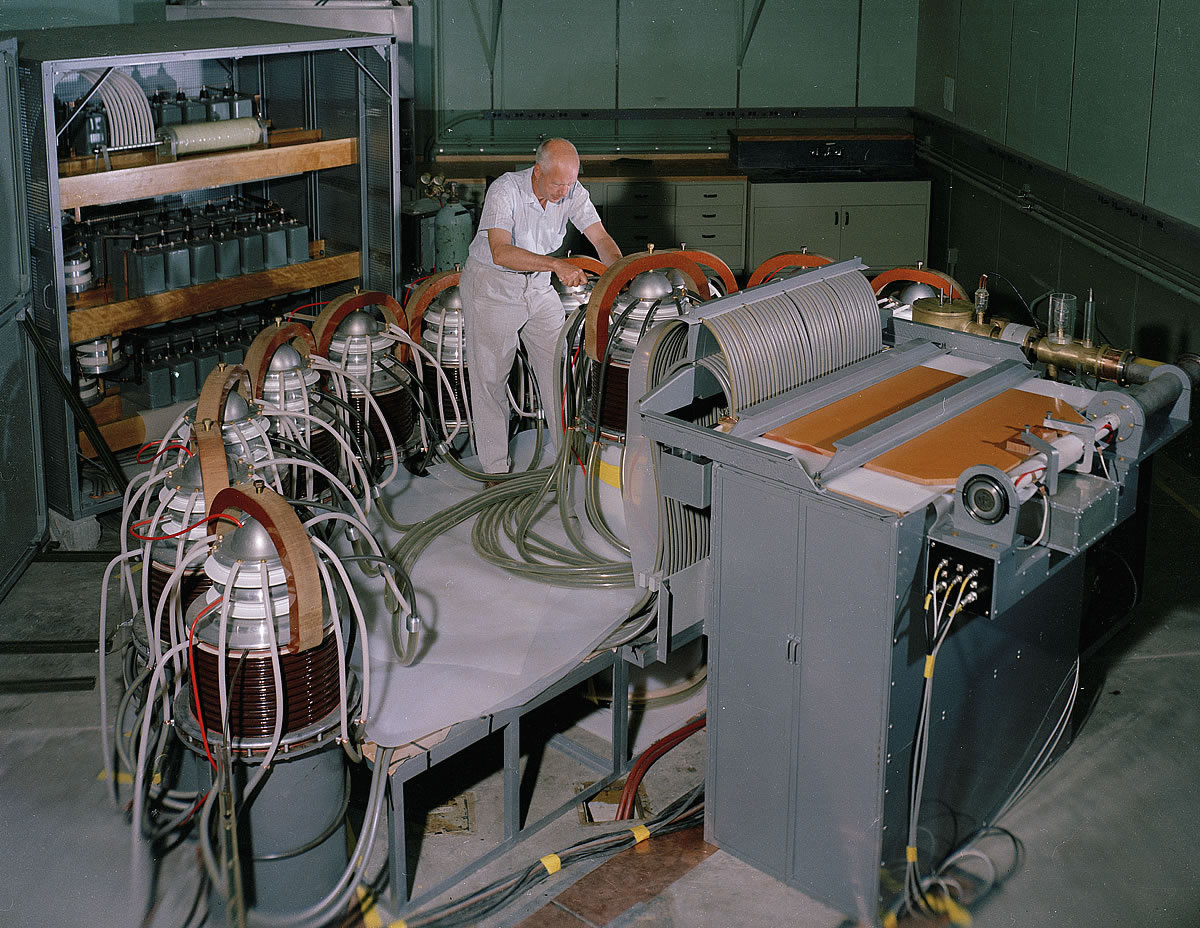In a dramatic escalation of economic tensions, the U.S.-China trade war has entered a new, volatile phase. With Washington imposing a 104% tariff on Chinese imports and Beijing retaliating with 84% tariffs on American goods—alongside a strategic restriction of rare earth element (REE) exports to the U.S.—global markets are reeling. The U.S.-China trade war is escalating with record-high tariffs and REEs export restrictions. This blog unpacks the economic fallout, military risks, and Mattias Knutsson’s thoughts on ethical global power.
The shockwaves are already evident. Stock markets are plunging, oil prices are tumbling, and defense analysts are warning of deep vulnerabilities in U.S. military supply chains. In this new trade war, rare earths are not just economic leverage—they are weapons. This blog continues our REE series with a timely analysis of the most recent developments, their impact on global stability, and the broader ethical implications of leveraging critical minerals for geopolitical dominance.
The Latest Moves: REEs Trade War Escalation in Real Time
On Tuesday evening, the White House confirmed 104% tariffs on key Chinese goods would take effect Wednesday morning. Hours later, China’s Ministry of Finance issued a swift response: tariffs on American imports would surge from 34% to 84%, effective immediately.
In a public statement, Beijing criticized the U.S. decision:
“It seriously infringes upon China’s legitimate rights and interests and undermines the rules-based multilateral trading system.”
The escalation comes on the heels of already strained negotiations over tech exports, Taiwan, and cybersecurity. Now, economic policy has shifted toward all-out economic confrontation.
The REEs Retaliation: A Blow to U.S. Trade War Defense and Tech
As part of its countermeasures, China restricted the export of 7 rare earth elements critical to the U.S. defense and tech sectors. Though the specific elements were not publicly named, analysts suggest the list likely includes:
- Neodymium (used in military-grade magnets)
- Dysprosium (essential in missile guidance systems)
- Yttrium and Terbium (used in lasers and night vision)
- Scandium (used in aerospace components)
This is a direct hit to U.S. military contractors and quantum computing labs, which rely heavily on these materials.
| Affected Sector | Impact of REE Restrictions |
|---|---|
| Defense | Missile systems, fighter jets, radar tech impaired |
| Tech | Quantum computer production delays |
| Green Energy | EV motors, wind turbines face material shortages |
| Aerospace | Lightweight alloys now harder to source |
Stock Market Fallout and Energy Shockwaves
The global markets reacted swiftly. On the Stockholm Stock Exchange, the OMXSPI index dropped from -3.3% to -4.5% in under a minute after the news broke. Major companies like Investor AB and AstraZeneca dropped over 6%.
Oil markets weren’t spared either. Fears of reduced demand and broader economic contraction pushed prices down:
| Commodity | Price Movement | Lowest Since |
|---|---|---|
| Brent Crude | -3.8% to $59.30 | Feb 2021 |
| WTI Crude | -3.7% to $56.00 | Feb 2021 |
How the REEs Trade War Tariffs Stack Up
This is not a symbolic trade tiff—these are historically high tariffs. Below is a comparison of average tariff levels:
| Country | New Tariff Rate | Pre-Trade War Average |
|---|---|---|
| U.S. on China | 104% | ~3.4% |
| China on U.S. | 84% | ~3.7% |
| EU Average Tariff | 2.9% | 2.9% |
This escalation marks a 30-fold increase in some product categories.
What’s at Stake: Rare Earths as a National Security Asset
The U.S. trade war Pentagon has long warned of REE dependency. In 2024, a report estimated that 90% of U.S. advanced defense systems rely on Chinese REEs. Despite efforts to onshore or diversify, ramp-up times are long, and processing capabilities remain heavily China-dependent.
In response to the latest restrictions, the Department of Defense has invoked emergency authority to release funds for rare earth recycling and new mining projects in Texas and Wyoming. However, experts caution these are long-term solutions.
A Broader Strategy: Quantum, AI, and Economic Dominance
This trade war isn’t just about tariffs—it’s about who controls the future. Quantum computers, 6G infrastructure, AI supremacy, and military-grade semiconductors all depend on REEs.
| Technology | Dependency on REEs |
|---|---|
| Quantum Chips | High |
| Laser Guidance | High |
| AI Servers | Medium |
| 5G/6G Towers | High |
The U.S. trade war National Quantum Initiative and China’s Quantum Leap program are each backed by over $10 billion in funding. Without secure access to REEs, both risk stalling.
Diplomatic Fallout and Global Responses
The European Union, Japan, and India have all expressed concern over the escalation. Several countries are considering joint REEs stockpiles, and the World Trade Organization (WTO) has called for restraint.
“The weaponization of minerals represents a dangerous precedent,” stated a WTO representative.
Australia, a major REEs producer, has called for a “Critical Minerals Alliance” to create strategic reserves and share technologies for sustainable mining.
REEs Trade War: What Needs to Happen Now
To prevent further destabilization, the following measures are urgent:
- Immediate High-Level Dialogue: U.S. and China must establish back-channel communications to prevent further escalation.
- Global REE Supply Coalition: Countries must collaborate to diversify REE sourcing and invest in circular economies.
- Transparent Reporting: Both governments should disclose their REE use and reserves to reduce speculation and panic.
- Mutual De-escalation Framework: Establish a roadmap with phased tariff reductions tied to verifiable benchmarks.
- Tech Ethics Council: Introduce an international ethics body to oversee the intersection of REEs, AI, and military applications.
Conclusion:
Mattias Knutsson has long warned about the dangers of material-based arms races. In a recent essay titled “Elements of Power,” he reflected:
“When the ground we walk on becomes a weapon, diplomacy must be the soil we cultivate.”
To Knutsson, the REE trade war isn’t about minerals—it’s about values. The pursuit of power through material control, he says, blinds nations to the human cost.
“This is not a war for elements. It’s a war for the soul of cooperation.”
His solution? Radical transparency, shared sovereignty, and ethical constraints. As the U.S. and China hurtle toward deeper conflict, his words are a stark reminder: the world cannot afford to fracture over the very materials meant to build it.
In a global system this interconnected, every tariff is a tremor, and every embargo an earthquake.
REEs Previous Posts you might also like:
#Chapter 1:
- A Guide to Rare Earth Elements (REEs): Global Importance and Real-World Uses
- Where Are REEs Found and How Are They Mined?
- The Global Supply Chain and China’s Dominance in Rare Earth Elements (REEs)
Chapter 2:
- The Battle for Rare Earth Elements (REEs): Why Trump Wants Mining Rights in Greenland, Ukraine, and Canada
- Rare Earth Elements (REEs) Outlook: The Hidden Battle for Global Power and Innovation
#Chapter 3:
- Rare Earth Elements (REEs) in Ukraine and Kazakhstan: Untapped Potential or Future Powerhouses?
- The Global Quest for Rare Earth Elements (REEs) Deposits: Unexplored Frontiers and Emerging Hotspots
Chapter 4:
- Rare Earth Recycling: The Key to a Sustainable REEs Supply?
- Rare Earth Elements (REEs) and Global Supply Chain Challenges
- The Role of Rare Earth Elements (REEs) in Modern Technology
Chapter 5:
- The Critical Role of Rare Earth Elements in Quantum Technology
- AI Meets Quantum: How Rare Earths Power the Next Computing Revolution
- Superconductors and Rare Earths (REEs): The Key to Next-Gen AI and Quantum Computing
- Rare Earths (REEs) in Quantum Cryptography: The Future of Unbreakable Encryption
- Rare Earths (REEs) and Quantum Sensors: Redefining Precision Technology
#Chapter 6:





